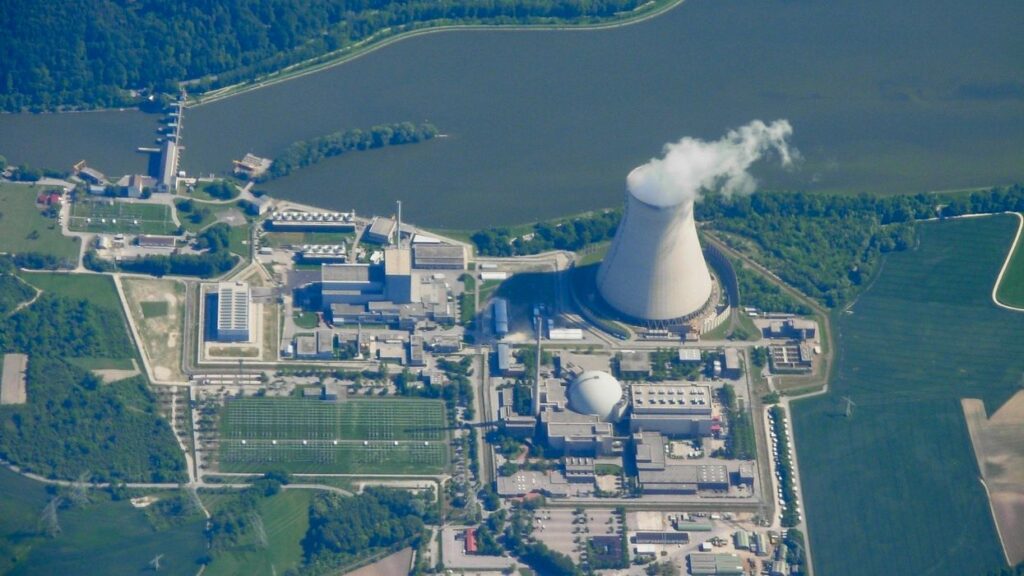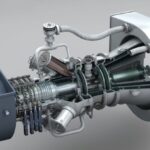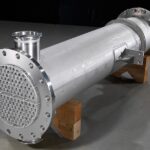
The main parts of the nuclear power plant are:
- Nuclear reactor
- Nuclear fuel
- Moderator
- Steam Generator
- Control rods
- Reflector
- Turbine
- Condenser
- Shielding
Nuclear reactor:
In the steam power plant in case of the boiler furnace the nuclear reactor is replaced. In the reactor heat is produced due to the happening of the nuclear fission in the fuel. At the time of fission process high amount of heat must be generated. But the liberation heat must be absorbed by the coolant along with the circulated core. In the nuclear power plant different types of reactors are used they are fast breeder reactors, boiling water reactors and pressurized water reactors.

Nuclear fuel:
To develop nuclear energy the nuclear fuel material are burnt by the nuclear fission. The nuclear fuel can be referred as a fuel; the physical objects should be composed with fuel material, and mixed up with the structural, neutron reflecting materials or neutron moderating materials.
In many cases the nuclear fuels contains the heavy fissile elements which are capable for the nuclear fission. The fuels are hit by the neutrons; at that case they have the capability of emitting neutrons when they are broken separately. So from that there is a possibility of self-sustaining chain reaction which releases the energy and controls the rate of nuclear reactor otherwise a rapid uncontrolled process can be observed in the nuclear weapons. Most normally used nuclear fuels are , Plutonium . The movements of refining, mining, purifying disposing of nuclear fuel together create the nuclear fuel cycle.
By using some other types like and some more elements produce the small amount of nuclear power by using the radioactive decay in the generators and in other cases of atomic batteries. In nuclear fusion tritium can be used as fuel.
Moderator:
Mainly the moderator is used to reduce the kinetic energy of the fast moving neutrons to slow down the moving neutrons. The neutrons increase the possibility of the chain reaction. The moderators used are beryllium, graphite and heavy water.
Properties of moderator:
- Moderator should possess high thermal conductivity
- Mainly they are available in pure state only
- In solid moderators we absorb high melting point
- In liquid moderators we can absorb low melting point
- By expending solid moderator it would have machinability and good strength.
- It offers resistance to the corrosion.
- Under radiation and heat it should be stable
- Mainly it slows down the neutrons.
Steam generator:
In the reactor the heat is liberated and the reactor coolant is in use and later circulated through the core. By using the coolant the generated heat must be transferred into the core reactor and later the remaining use it for the steam generation. The commonly used coolant is heavy water or ordinary water.
Control rods:
By using the control rods the rate of a chain reaction is regulates. The control rods are made up of cadmium; boron and some more other absorb neutron elements.
Properties of control rods:
- It should possess acceptable heat transfer properties.
- Under radiation and heat they are stable
- Control rods are corrosion resistance.
- For absorption they should have sufficient cross sectional area.
- Under all conditions they should be strong and be able to shut down the reactor suddenly
Reflector:
During the fission process the neutrons produced will be partly absorbed by the coolant, moderator, structural material, fuel rods. The unabsorbed neutrons are left and will try to leave the reactor core later will be lost. The losses are decreased by surrounding the core reactor by a material which is known as reflector. By using the reflector the neutrons are sent back to the core. The riveted neutrons can cause the fission and it improves the reactor neutrons economy. In most of the cases the reflector are made up of beryllium and graphite.
Turbine:
Steam which was produced in the steam generators are passed into the turbine. By expanding the steam in the turbine the work must be done.
Condenser:
The steam from the turbine flows into the condenser where the cooling water is circulated. The exhausted steam must be converted into the water in the condenser through cooling. By using the feed pump the condensate is pumped in to the steam generator.
Shielding:
The source of the reactor is intense radioactivity. The released radiations are very dangerous. So for that situation shielding is providing a grip to the radioactive rays. To prevent the radiation thick concrete shielding along with the pressure vessel is provided and the radiation is escaped into the atmosphere.


